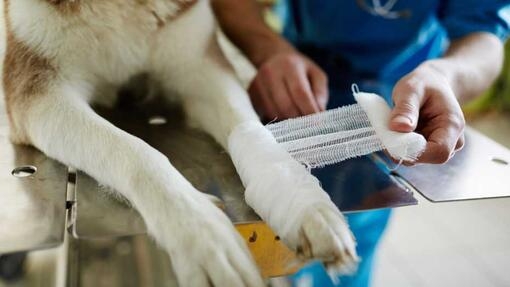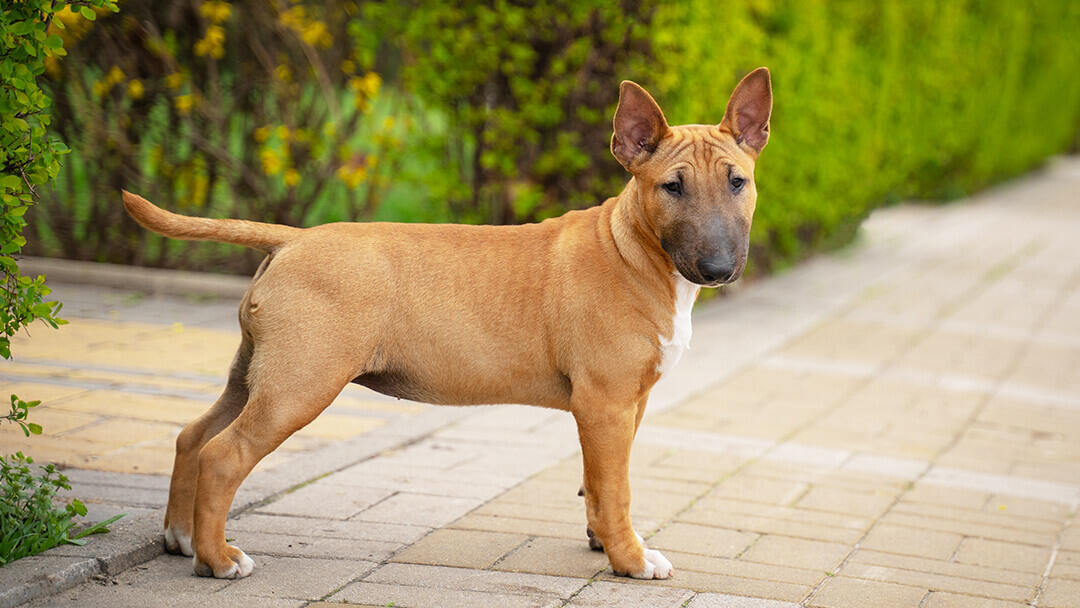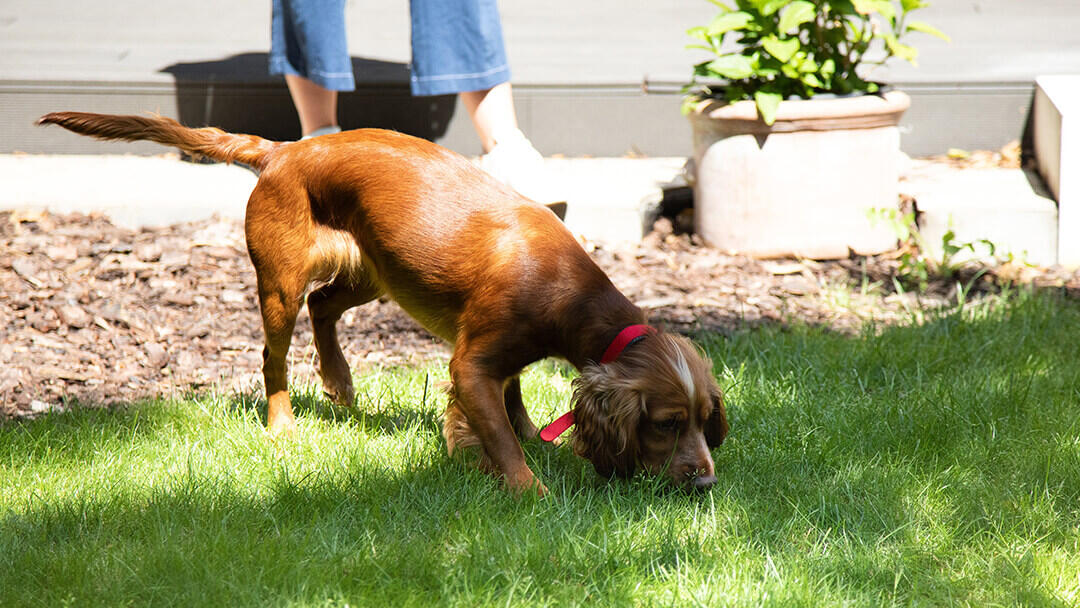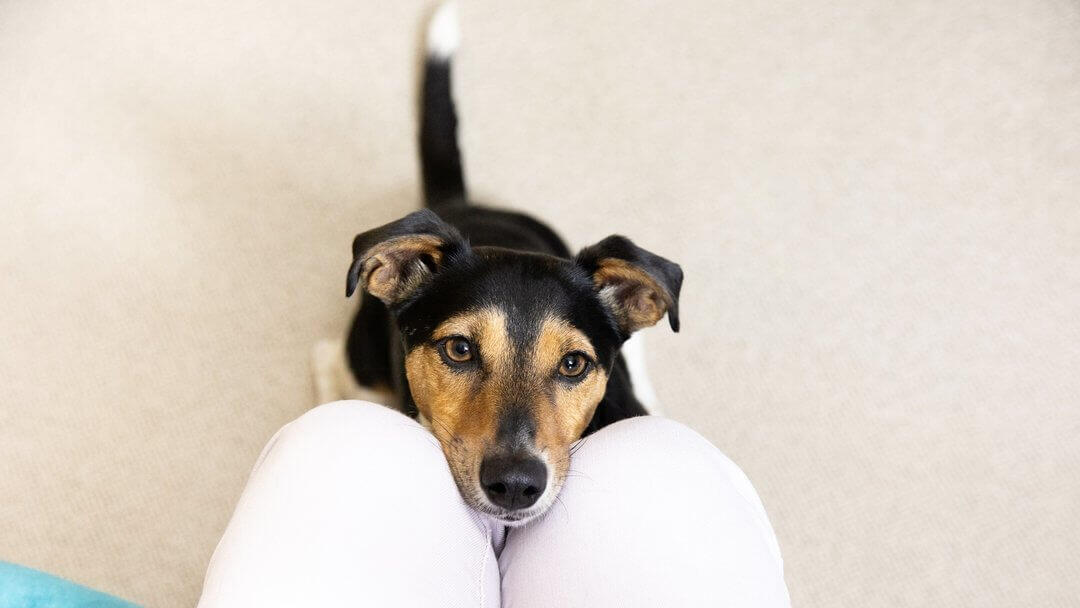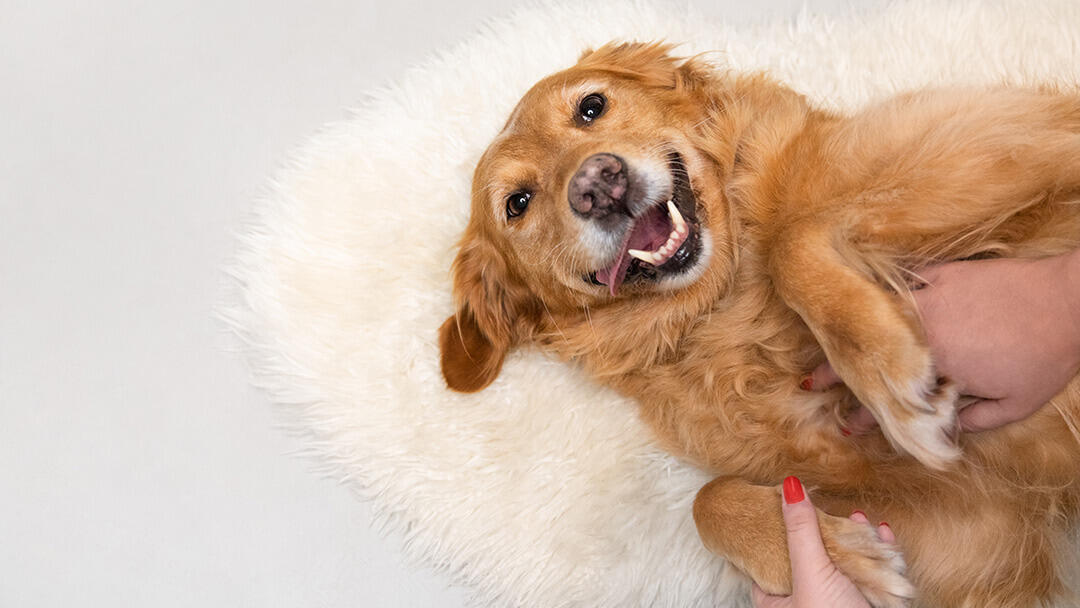
You should contact the vet as soon as you notice something is wrong with your dog. In some cases, however, urgent care is needed while waiting for professional help. This is when owners can step in. Knowing what to do in those moments and how to administer dog first aid can save your pet’s life.
Our guide is designed to help you understand how to do dog first aid in different scenarios and when to do it. Take a read below.
We recommend speaking to your vet for advice before performing any of the first aid below. With any first aid, there is a risk of injury or harm to your pet if it is performed incorrectly, so you should always seek veterinary guidance.
Choking dog first aid
There’s a risk of your dog choking at any time, so it’s important to know the signs and what to do. This is our guide to dog first aid for choking.
What are the signs of choking in dogs?
- They’re finding it hard to breath
- A choking sound when they breathe
- Pawing at their mouth a lot
- Blue lips and/or tongue
It’s essential not to confuse coughing with choking. Performing first aid for choking if your dog is only coughing could be harmful. Choking is usually sudden and very distressing, and if your dog’s lips or tongue are turning blue this usually indicates choking. If you’re unsure and your dog is still conscious, it’s best to focus on getting to your vet as quickly as possible.
How to perform first aid when your dog is choking
- Look in your dog’s mouth to see if you can see the blockage.
- Only remove it if it’s safe to do so without being bitten or pushing the object down the throat.
Typically, if your dog is choking the object will be too far down the throat to be easily removed through the mouth – and reaching into the mouth risks getting bitten, as your dog may panic.
If your dog is choking on a large object like a ball, you may be able to dislodge this externally.
- If it is safe to do so, lie your dog on their back (you may need assistance)
- Place your thumbs either side of the base of the throat, just behind the jaw
- You should be able to feel the object. Apply firm pressure from behind it, pushing it down (towards your dog’s back) and forwards (towards their nose).
If you can’t remove the object:
- Contact your vet and be on your way to see them
- Lie your dog on their side
- With an open palm, strike their rib cage firmly 3-4 times
- Keep repeating until the object is loose or until you’re at the vets
If you’re unable to reach a vet quickly and your dog is either unconscious or in severe distress with blue gums and tongue, you can also try a modified Heimlich manoeuvre. However, this can be harmful if performed incorrectly, so speak to your vet before attempting this.
For small dogs, pick them up and hold their back to your front, before using your fist to gently but firmly thrust up and into the soft spot just beneath their ribs.
For large dogs, lay them down and attempt the manoeuvre using the heel of your hand.
If your dog has had an episode of choking and you’ve cleared the obstruction yourself, you should still see a vet urgently to assess your dog for any damage.
First aid for when your dog’s not breathing
If you notice your dog becoming very lethargic, struggling with their breathing or not breathing at all, you should call your vet immediately. They will be able to talk you through any necessary first aid and prepare to see your pet as an emergency.
Dog first aid when you can’t find your pet’s heartbeat
If your dog is unconscious and doesn’t have a heartbeat, you must call your vet immediately. Performing dog first aid in the meantime may help but is unlikely to be successful without rapid veterinary attention. If necessary, your vet will be able to advise you on how to perform first aid, but initiating CPR without veterinary advice could cause harm to your pet.
Dog first aid for poisoning
Your dog might have eaten something toxic to them which could cause poisoning. Many toxins for dogs are everyday items, like chocolate. Call your vet immediately if you suspect poisoning.
What are the signs of poisoning in dogs?
- Diarrhoea
- Out-of-character behaviour
- Loss of appetite
- Vomiting in dogs
- Pale gums
- Seizures or collapsing
- Lethargy
How to perform first aid if your dog is poisoned
- Contact your vet straight away and be on your way to see them.
- See if you can see any leftovers of the substance in your dog’s mouth. If it’s safe to do so without being bitten, remove it.
- Take the substance or the packet to the vet with you so they can assess the best course of action. It’s also good to know how much your dog has ingested.
Dog first aid for a cut paw
Running around outside can easily cause a cut paw or torn claws. Dogs’ paws get in contact with bacteria as they touch the ground, so it’s important to treat the cut quickly to avoid it getting infected. Here is how to treat a dog’s cut paw.
How to treat a dog’s cut paw
- Assess the cut – is it deep or a minor cut? If it’s deep, take your dog to a vet immediately.
- If you can, rinse the cut with plain water or ideally dilute salt water to remove any obvious dirt.
- Apply firm pressure with a piece of bandage material, cotton wool or clean fabric. Keep this on for at least 5 minutes to stop the bleeding, or until you reach the vet if the bleeding continues.
- See your vet as soon as possible. It’s best to get a vet to fully assess the paw. Cuts to pads and torn nails can be painful and prone to infection, and there could be foreign material like a thorn trapped inside. They will be able to thoroughly assess your dog and recommend a treatment plan .
Dog first aid for a fracture or broken bone
If your dog is having difficulty moving or is even limping, it’s a possible that they have a fractured or broken bone. If the bone is broken, you might see the skin is broken. You’ll need to contact your vet immediately if you suspect a fractured bone.
How to treat a broken dog bone or fracture
- If the skin is broken and there is a visible wound, prevent your dog licking the area and try to keep it as clean as possible while you get to the vets. If necessary, use a clean piece of cloth or bandage to very loosely cover the area.
- Do not add a splint as this could cause harm.
- Do not give painkillers unless advised to by your vet as many of these are unsafe for dogs.
Always be aware of your own safety and the safety of those around you. A dog in pain, especially if they are frightened, can behave unpredictably even though you are trying to help them. Even though you know your dog would never bite in normal circumstances, when hurt, they may behave unpredictably – either through fear or because they are protecting themselves from more pain.
We hope this article was helpful. Though these situations are worrying for both you and your pooch, knowing how to perform dog first aid and seeing your vet promptly can save their lives.
Next, see our other daily dog care guides on home remedies for dogs, but keep in mind that you should always call the vet first before trying any solutions at home.


